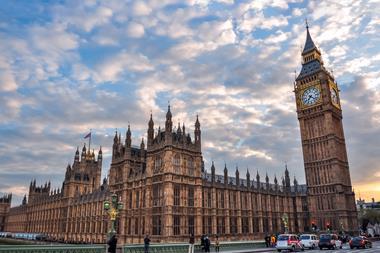A bitter wrangle between insurers and regulators is tearing the motor insurance industry apart. Paddy Gourlay investigates.
The tension caused by the spiralling cost of motor premiums became open hostility earlier this year when the Irish Insurance Federation (IIF) issued a strong rebuttal to Motor Insurance Advisory Board (MIAB) allegations that insurers were running a cartel to squeeze young drivers and make unfair profits.
The accusations are the latest in a war which started in 1996, when insurers said they would exclude some young drivers in certain geographical locations.
Regulators are convinced insurers are talking problems up so they can make more money. Deputy prime minister Mary Harney has threatened to introduce price controls, while her counterpart, Fine Gael enterprise, trade and employment spokesman Charlie Flanagan, stirred the pot: "It is now clear motor insurance companies have been deceiving their customers on a grand scale over the years."
The industry is a sitting duck. Insurance is never the most popular service - just four companies dominate the market and motor premiums are sky-high.
Against this backdrop, the industry has made visible efforts to introduce measures to flatten premium rises in the past two years.
In particular, the Insurance Institute of Ireland (III) has actively sought to improve standards through the introduction of intermediate qualifications and the creation of university courses.
The IIF is contemptuous of the cartel allegations and points to the lack of statistical evidence. Irish insurers are labouring under a massive claims burden, which accounts for 87% of liability and motor insurers' total expenditure. Both books have also suffered because of the hike in reinsurance premiums. Motor insurance has not returned a profit for years.
Insurers blame the legal system. The problem was summed up by former IIF president Vincent Sheridan: "The most serious issue affecting the level of motor premiums, and one area in which no progress is apparent, is the litigious environment that exists and the high level of awards handed down by the courts. The contribution of the legal profession to the creation of this environment must be questioned."
A lot at stake
To help speed up the claims process and reduce bills, a new organisation - the Personal Injury Advisory Board (PIAB) - is being set up. The gestation period for the body so far is six years and that reflects the nature of the problem. Even now the proposals are being criticised by the Law Society.
"A claimant would definitely be playing away from home rather than in the neutral venue of the courts in having his case assessed by the proposed Personal Injury Assessment Board," says Law Society's director general, Ken Murphy.
"We would have hoped the government had the vision to see that, while the economics of personal injury claims is very important, there is more at stake than economics," he adds.
IIF chief executive Michael Kemp looks enviously at the Woolf reforms in the UK as an ideal solution.
He says: "It is not that we have higher fees, but higher bills. Cases go on longer and there is a tradition of settling late in the day."
Kemp would also like the introduction of a judicial table for compensation claims to cure the hangover of high awards for damages left when the jury system was scrapped 12 years ago.
He says the IIF will be lobbying for this reform, but adds: "Inevitably when you are talking to these institutions, the pace of change is very slow."
Meanwhile, the industry is facing two new hits on the claims front. First, the High Court has lowered the multiplier for non-medical and future care costs from 4% to 2% and effectively introduced a negative discount for medical costs.
Secondly, hospitals are now able to claim the full costs of road traffic accidents for successful third-party motor claims. Kemp calculates hospitals will claim up to £650 a day, rather than the £150 they used to.
Although the legal system is a bugbear for insurers, there is a more fundamental reason for motor premium inflation. In a recent survey on road deaths, the National Safety Council (NSC) found a high proportion of young male drivers and their passengers among the 84 road fatalities so far this year.
More than half the drivers in single vehicle fatal crashes were under 32. To combat the problem, the NSC has called for tough action and its recommendations are backed to the hilt by insurer bodies.
These include the creation of a separate Garda traffic corps whose members deal only with motoring offences, the early implementation of the proposed penalty point system for motoring offences through the Road Traffic Bill, the integration of Garda, court and driver licensing IT systems and doubling on-the-spot fines for speeding.
Bad public image
There is general recognition that the industry is suffering an image problem, similar to that in the UK.
Broadcaster, writer and academic Maureen Gaffney summed up the public perception of the industry when she said it was associated with words such as closed, uncaring and unresponsive.
"That negative image must be having an effect on morale," she says. "People psychologically respond to what they see as a dislike of themselves by becoming rigid, defensive and hostile."
III chief executive Denis Heavey hopes new qualifications will help: "First, we wanted to involve the companies as much as possible in the qualifications and give them a central role in dictating their content.
"Second, we needed to create qualifications that reflected the laws and environment of Ireland rather than rely on those from the UK's Chartered Insurance Institute."
In addition, the institute has been instrumental in initiating university courses in insurance. There are several courses in existence, including one at Limerick University that is ten years old.
Last year, Dublin University joined the club with a modular course as part of the degree in business and finance. It became over-subscribed, perhaps because of the proximity of the International Business Finance Centre.
Competition for labour
The emphasis on better standards is reflected in recruitment. There is a war for talent as the economy goes from strength to strength.
Despite the competition for labour, Catherine McCloskey of Celtic Careers says there has been a notable upping of insurers' expectations, particularly with regard to "soft skills".
"They have become far more demanding and typically look at seven or eight CVs for a particular role, whereas in the past they were more ready to take on whoever was willing," she said.
"Today, they are sensitive of the image they have to portray to the public."
Irish Brokers' Association chief executive Paul Carty says: "There is no magic bullet for the ills of the Irish industry.
"The problem is not just the claims bill, but the whole environment that has to be changed."
Premium hikes prompt price controls
Astronomical motor premium inflation caused the deputy prime minister to threaten the introduction of price controls in June.
Mary Harney described the increase in premiums, which will be 15% to 20% this year, as "very worrying". Speaking at the Irish Insurance Federation's (IIF) annual lunch, she delivered the uncompromising message that, while she could sympathise with explanations offered by the industry, she did not necessarily accept them. "I wouldn't rule anything out, because these kinds of increases are certainly not justified."
Young Irish male drivers typically pay more than £2,000 for motor cover. Those under 20 with a provisional or full driving licence will be quoted twice and three times that amount. Some are paying more than £4,000 for cover, leading to a high percentage of uninsureds. As a result, there are far more under-24-year-olds uninsured than the European average of 14%. Young female drivers pay less, but all pay more than twice the average premium of £480.
Hosted by comedian and actor Tom Allen, 34 Gold, 23 Silver and 22 Bronze awards were handed out across an amazing 34 categories recognising brilliance and innovation right across the breadth of UK general insurance.













































